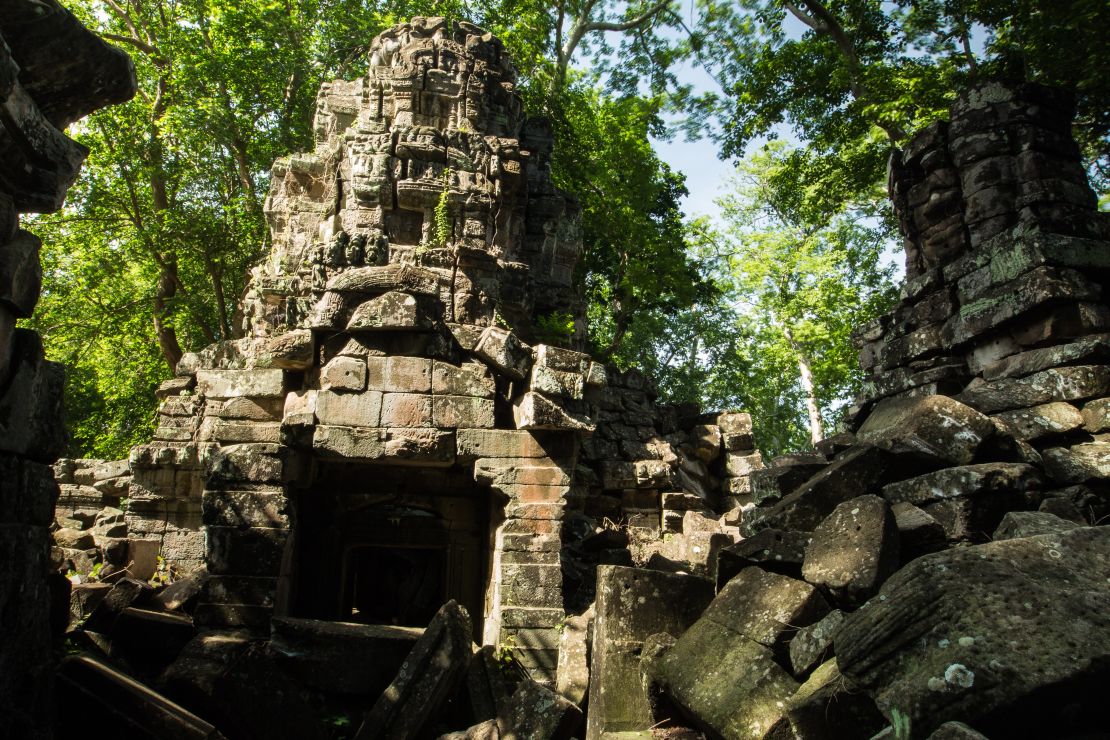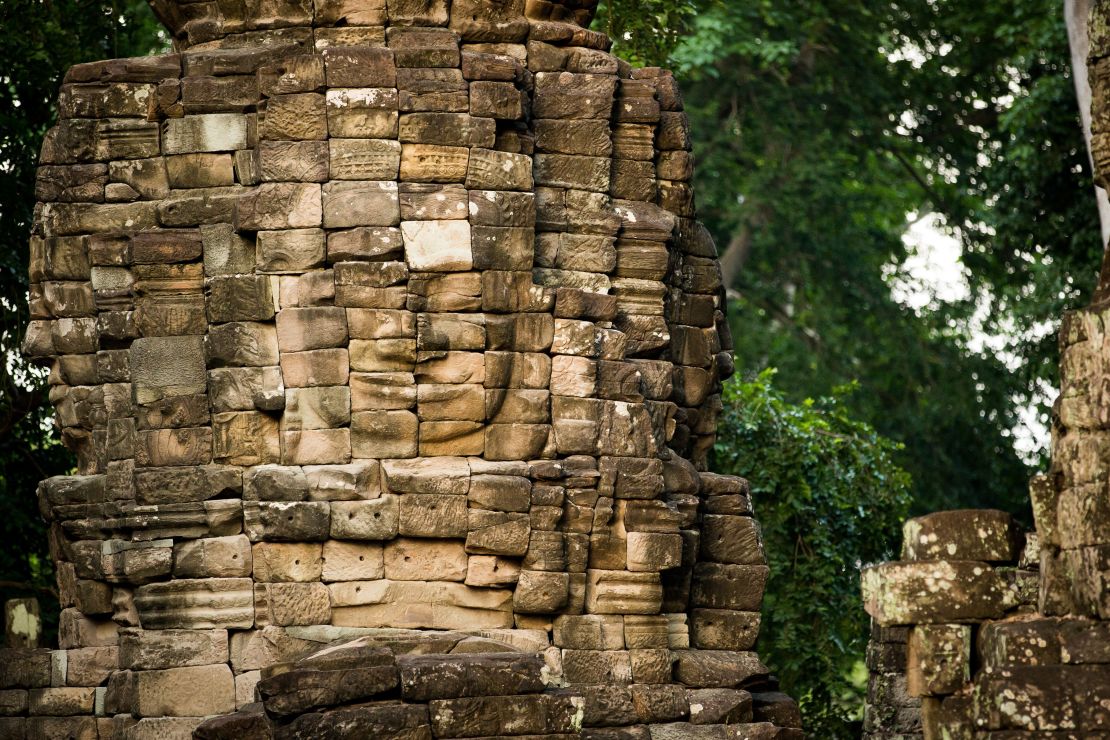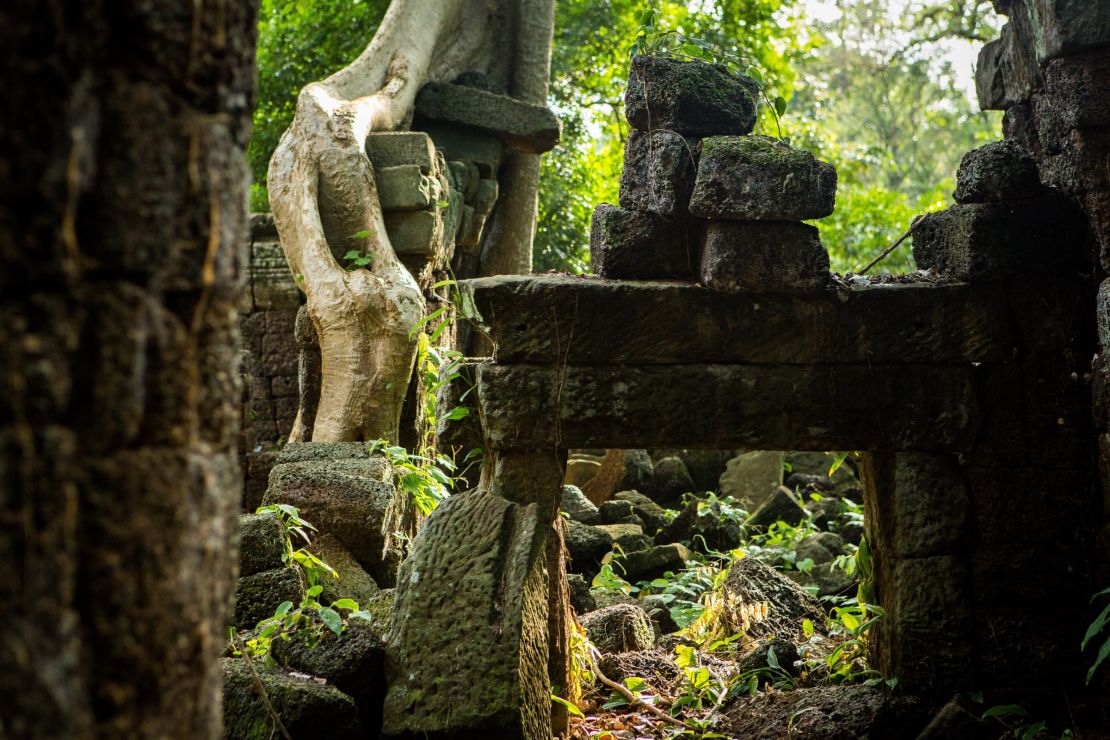If you’ve heard of one Cambodian temple, it’s probably Angkor Wat – an awe-inspiring yet well-trodden UNESCO World Heritage Site in Siem Reap.
But many travelers don’t realize the Seventh Wonder of the World is one of thousands of ancient Khmer temples dotting the Cambodian countryside.
Hidden beneath a canopy of trees in the northwestern jungles of Cambodia lies a lesser known beauty: Banteay Chhmar, which roughly translates to “Citadel of Cats.”
Brought to life in the 12th century by Jayavarman VII, one of the Khmer Empire’s greatest rulers, this little-understood temple was left uninhabited for nearly 800 years.
Time, severe pillaging and the inexorable domination of nature left the site in a state of semi-collapse. It was added to UNESCO’s tentative list in 1992.
Beginning in 2008, the Global Heritage Fund and the Cambodian government began conservation and community development efforts, opening the complex to visitors soon after.
On a trip to remote Banteay Chhmar, CNN encountered a mysterious world, far removed from the crowds and sounds of Siem Reap.
A transcendental experience
Considered one of the most important Khmer temple complexes in its heyday, Banteay Chhmar was built to honor King Jayavarman VII’s son Suryakumara and four army commanders.
Amid jungle foliage and broken rocks, the eight-temple complex features stone-faced towers graced with enigmatic smiles – thought to depict Jayavarman or Buddhist deities – and intricate bas-reliefs recounting tales of religion and war.
Simon Warrack, a stone conservator who has studied Cambodian temples for more than 20 years, estimates that hundreds of meters of inscribed walls have collapsed over time, leaving behind a mysterious jigsaw puzzle for historians and archeologists.
In terms of atmosphere, Warrack likens Banteay Chhmar to the famed temples of Angkor Wat in the 1990s, when tourism was still in its infancy.

With millions visiting Siem Reap every year, he says, the “old feelings of mystery and adventure” once associated with the temples are all but gone.
But Banteay Chhmar – a few hours’ drive from Angkor Wat, with just 1,500 visitors annually – still captures that transcendental experience.
As Warrack puts it, to explore the temple is to “step back into another age and experience a unique interaction, perhaps battle, between culture and nature.”
Looking around, it seems nature is winning the fight.
The roots of massive trees grip still-standing walls, as if melding into one structure.
Vines infiltrate nooks and crannies, devouring fallen stones etched with ancient carvings.
But the most remarkable thing about Banteay Chhmar might be the near-perfect silence – broken only by the distant purr of motorbikes, the drone of insects and the call of songbirds.
A community project

For those who live in the region, the temple is more than an archaeological or cultural marvel – it’s also an economic boon.
Presently, 23% of residents in the Banteay Meanchey province – where the temple is located – still live in poverty.
But the situation has slowly improved with tourist arrivals.
From 2008 to 2016, the number of visitors to Banteay Chhmar jumped 112%, from 744 to 1,575, according to the Global Heritage Fund.
“If we did not open this temple, there would be no tourists here,” Mao Sy, the president of Banteay Chhmar Community-Based Tourism group, tells CNN. “Now, all the villagers can earn income from opening homestays, cooking food, and selling crafts.”
Local resident Nil Loeun, 67, has benefited from the boost in tourism having recently opened a homestay near the temple.
“When tourists come and stay at my house, my family’s life gets better,” she tells CNN.
In 1978 during the civil war, Loeun was forcibly relocated by Khmer Rouge leader Pol Pot’s regime to Banteay Chhmar and has lived by the temple since.
MORE: Travel to the Banteay Chhmar temple in 360°
Glorious isolation

With the help of the Global Heritage Fund, Banteay Chhmar is attempting to strike a balance between the needs of conservation, access, and sustainable economic development with the interests of the local community.
It’s a strategy that sits well with people like Mao Sy and Simon Warrack, who say they’d like Banteay Chhmar to enjoy sustainable growth in tourism.
But Warrack isn’t worried about mass tourism affecting Banteay Chhmar the way it has Angkor Wat.
“The people who go to Banteay Chhmar are second- or third-time visitors [to Cambodia’s temples] who become addicted and want to explore.”
Those who do decide to venture to this temple in particular, Warrack says, are rewarded with “glorious isolation.”

















